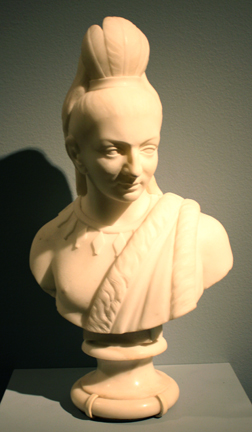The Song of Hiawatha facts for kids
The Song of Hiawatha is a long, exciting poem called an epic poem. It was written by a famous American poet named Henry Wadsworth Longfellow. The poem was first published in 1855. It tells a story that is loosely based on the legends of Native American peoples. The poem quickly became very popular, selling many copies soon after it came out.
The story is all about a hero named Hiawatha and his true love, Minnehaha. It takes place along the south shore of Lake Superior. Even though many people loved the poem, some critics did not like it as much. However, it inspired many composers to write music and painters to create beautiful artworks. There was even a television movie made in 2005 based on the poem.
Contents
The Story of Hiawatha
The poem begins with a powerful leader called Gitche Manito, who brings peace. He tells of Hiawatha's coming birth. A woman named Nokomis falls from the moon to Earth. Nokomis then has a daughter named Wenonah. Wenonah grows up to be a beautiful young woman. She and the West Wind have a baby boy, and they name him Hiawatha.
Hiawatha's Adventures and Love
Hiawatha has many exciting adventures as he grows up. He falls deeply in love with a woman named Minnehaha. He also defeats an evil magician called Pearl-Feather. Hiawatha is very clever; he even invents a way for people to write things down, creating a written language. He also discovers corn, which becomes an important food.
Hiawatha's Final Journey
The poem ends with a canoe arriving at Hiawatha's village. Inside the canoe is "the Priest of Prayer, the Pale-face." This person brings news of Jesus Christ. Hiawatha welcomes him with joy. Hiawatha and the other chiefs in the village decide to accept the Christian message.
Before he leaves, Hiawatha says good-bye to Nokomis, the warriors, and the young men. He tells them, "But my guests I leave behind me / Listen to their words of wisdom, / Listen to the truth they tell you." This means he supports the Christian missionaries. Then, Hiawatha gets into his canoe for the very last time. He paddles westward toward the sunset and leaves forever.
Gallery
- Rena N. Coen, “Longfellow, Hiawatha and some 19th century painters”, Papers Presented at the Longfellow Commemorative Conference, April 1-3 1982, National Park Service, Longfellow National Historical Site
Images for kids








